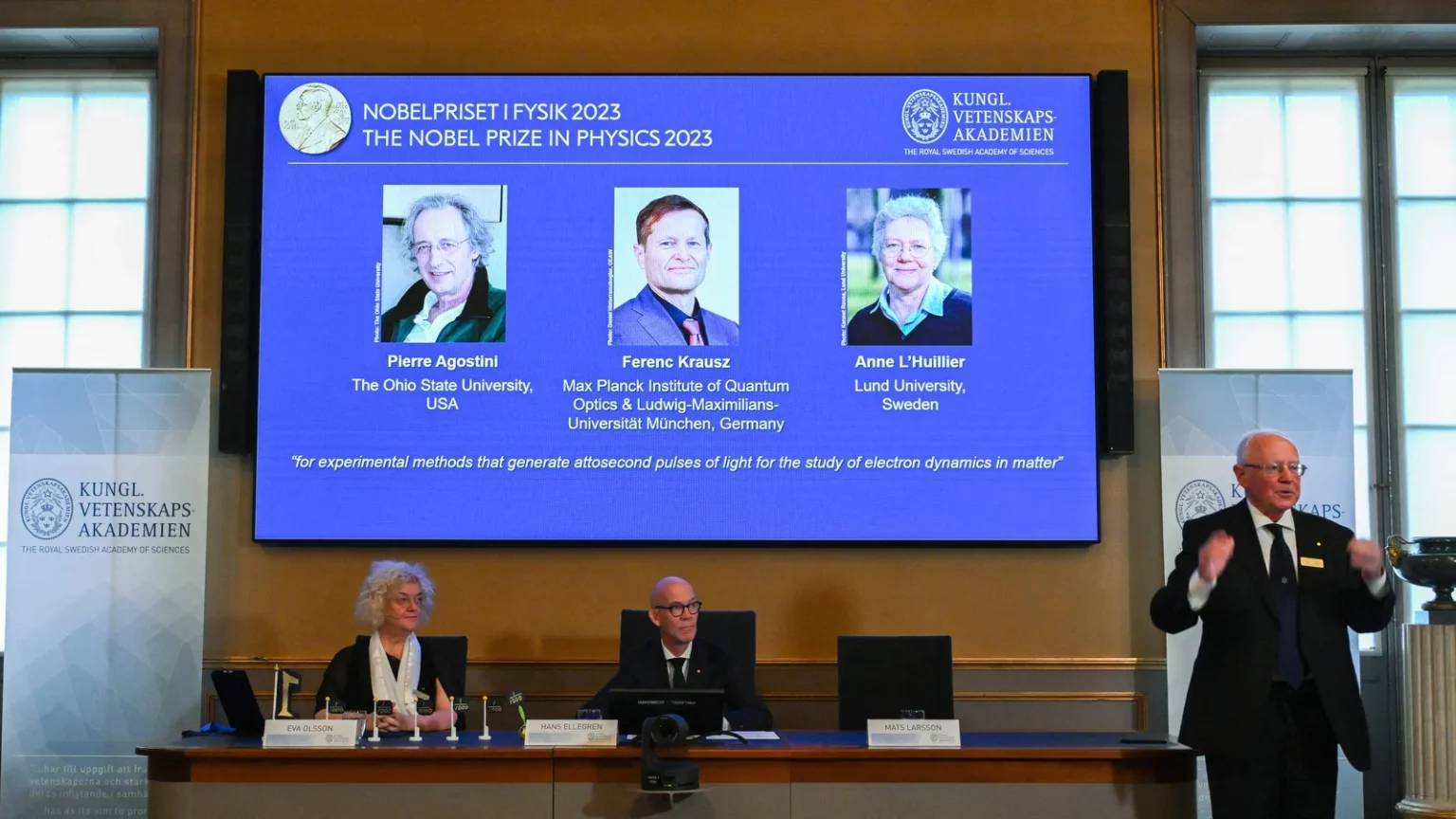On Tuesday, three atomic physicists, France’s Pierre Agostini, Hungarian-Austrian Ferenc Krausz, and French-Swedish Anne L’Huillier, won the Nobel Physics Prize for probe into tools for exploring electrons inside atoms and molecules.
The jury said, the trio, three atomic physicists, was honored “for experimental methods that develop attosecond pulses of light for the study of electron dynamics in matter.”
They added, “An attosecond is so short that there are as many in one second as there have been seconds since the birth of the universe.”
The trio “have shown a way to make extremely short pulses of light that can be used to measure the rapid processes in which electrons move or change energy,” the jury said.
It said, “The laureates’ contributions have enabled the investigation of processes that are so rapid they were previously impossible to follow.”
Krausz is a director at the Max Planck Institute in Germany, while Agostini is a professor at Ohio State University in the United States.
However, the fifth woman to win the Physics Prize since 1901, L’Huillier is a professor at Lund University in Sweden.
She told reporters she was teaching a class when she received the call from the Royal Swedish Academy of Sciences, and it “was difficult” to finish the class.
L’Huillier said, “I am very touched… There are not so many women that get this prize so it’s very, very special.”
The trio will share the award of 11 million Swedish kronor (around $1 million) and will accept the prize from King Carl XVI Gustaf at a ceremony in Stockholm on December 10.




